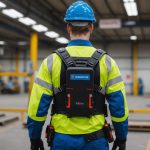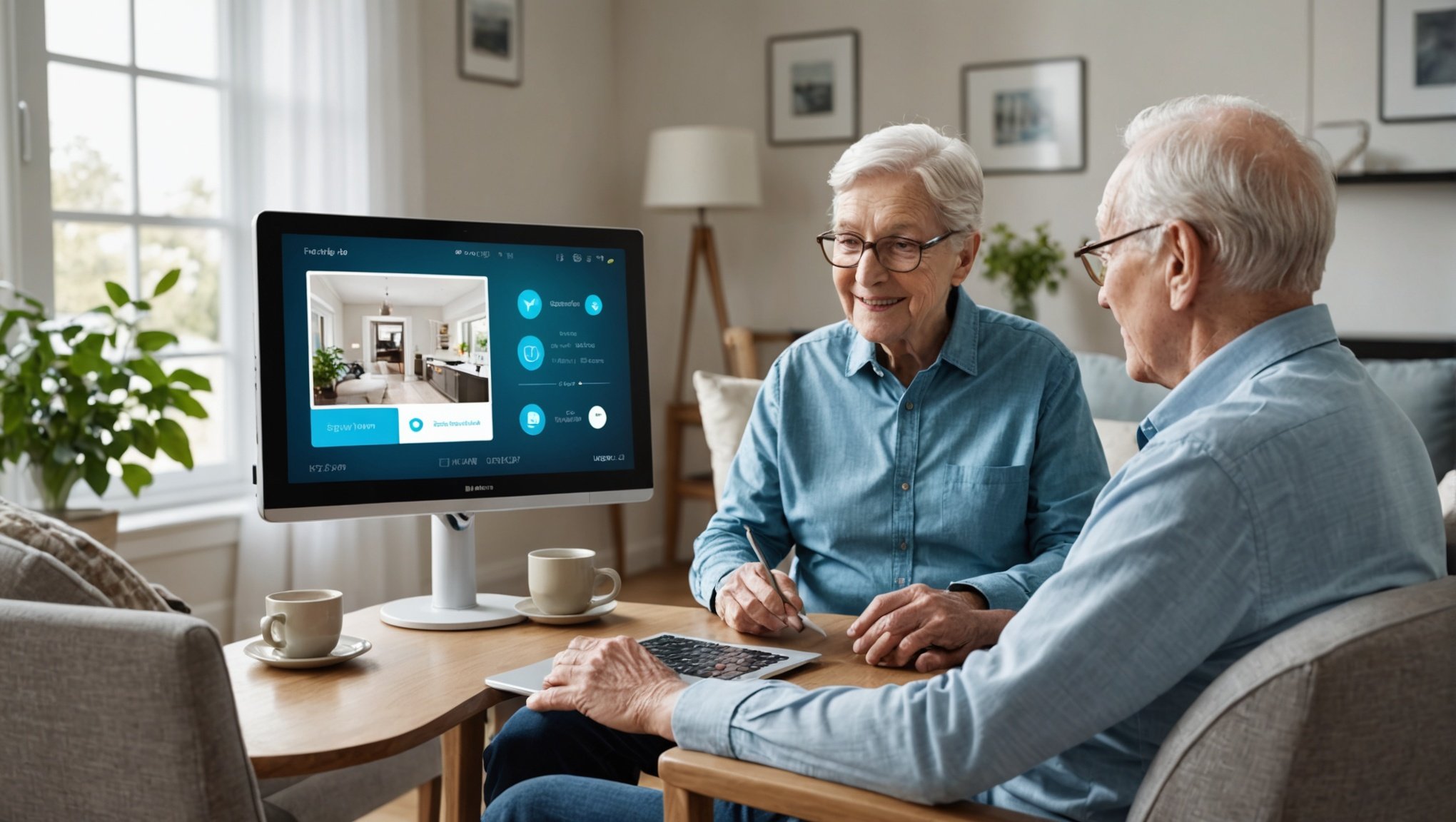Overview of Smart Home Features
Smart home features are transforming the way we experience tech-savvy living. These features empower users by introducing innovative solutions for everyday tasks, from automated lighting to smart thermostats. They are particularly appreciated because they cater to a diverse audience, including elderly individuals who can enjoy a safer and more comfortable living environment.
At the heart of these innovations is technology that bridges the gap between different user demographics. For younger, tech-savvy individuals, smart home features present an opportunity to integrate cutting-edge technologies into their daily lives. Devices such as smart speakers or intelligent security systems not only enhance convenience but also provide substantial lifestyle improvements.
Topic to read : Top Pest-Repelling Plants for a Thriving Home Vegetable Garden
Meanwhile, elderly-friendly technology is designed with accessibility and ease-of-use in mind. Features like voice-activated assistants can help seniors manage their homes with minimal physical effort, offering peace of mind to both users and their families. Furthermore, features such as fall detection systems and smart medicine dispensers ensure additional safety.
Overall, these essential smart home features deliver a multitude of benefits by promoting independent living and offering solutions that are tailored to specific user needs. Everyone can enjoy the advantages provided by a tech-enhanced domestic environment, showcasing the perfect amalgamation of technology and convenience in modern living spaces.
Additional reading : Creative Ways to Blend a Modern Aquarium into Your Minimalist Living Room Aesthetic
Key Smart Home Devices for Convenience
In today’s fast-paced world, convenience technology has transformed our homes, making daily tasks easier and more efficient. Among the essential smart home devices are smart speakers equipped with virtual assistants. These devices manage schedules, play music, and answer queries, offering user-friendly solutions that seamlessly integrate into daily life.
Smart lighting systems are another significant addition to the modern home. These systems grant users the ability to control the intensity and colour of lights through apps or voice commands, enhancing not only the accessibility but also the ambiance of living spaces. Adjusting lighting for various moods or activities can be done effortlessly, meeting both practical needs and aesthetic preferences.
For those seeking to balance comfort and energy efficiency, smart thermostats are invaluable. These intelligent devices learn your heating and cooling preferences, adjusting settings accordingly to optimise comfort while minimizing energy consumption. They can be controlled remotely, ensuring a pleasant home environment upon return.
By incorporating these smart home devices, users can tailor their home environment to suit their lifestyle needs, enhancing convenience. From virtual assistants aiding daily tasks to systems that improve energy management, these technologies deliver undeniable benefits that redefine modern living. Embracing such advancements provides practical solutions that enhance everyday life.
Safety Features in Smart Homes
In the constantly evolving landscape of Smart Home Safety, integrating advanced security technology has become crucial. Many homes are now equipped with smart security systems that include cameras and alarms. These systems offer homeowners peace of mind by providing real-time monitoring and alerts. They can be accessed remotely, allowing users to view their property and respond to any suspicious activity from anywhere in the world.
Beyond traditional security, smoke and carbon monoxide detectors with smart notifications have become vital components of modern homes. These devices actively monitor air quality, sending immediate alerts to the homeowner’s smartphone if dangerous levels are detected. This early warning system is crucial for preventing tragedies and ensuring inhabitants can evacuate safely.
Moreover, emergency response devices tailored for elderly users are transforming the way we think about safety for older adults. These devices can detect falls, monitor health parameters, and send out emergency alerts to family members or healthcare providers. This allows for a prompt response in the case of an emergency, enhancing the safety and independence of elderly individuals.
Overall, these technologies contribute significantly to the robustness of smart home security, ensuring users are well-informed and prepared for any potential hazards.
Enhancing Accessibility through Technology
In today’s rapidly advancing world, accessible smart technology is transforming how we interact with our environments, particularly benefiting those needing user accessibility. One notable advancement is the advent of voice-activated systems that allow hands-free control. These systems enable users, especially the elderly, to operate devices through simple voice commands, making daily tasks more manageable and less physically demanding.
Smart appliances have also been designed with ease of use in mind. They feature intuitive interfaces and are equipped with sensors that adjust settings automatically for optimal performance. This ensures that everyone, regardless of their technical proficiency, can benefit from modern conveniences without any stress or frustration.
Integration with wearable technology is another significant stride. Devices like smartwatches or health monitors track vital health metrics such as heart rate, activity levels, and even sleep patterns. This is invaluable for elderly assistance, as these wearables can alert users and caregivers to potential health issues before they become emergencies.
Moreover, user accessibility enhancements in these technologies mean they can be customised to meet individual needs. Whether through personalised alerts, adaptable interfaces, or remote support, technology’s role in enhancing accessibility continues to grow, offering solutions that empower users to lead more independent and safer lives.
Practical Applications and Real-Life Examples
In the world of smart home applications, real-life use cases provide clear insights into how technology implementation can transform daily living. Take, for instance, elderly-friendly smart home setups. These setups often include devices like motion sensors that illuminate pathways, ensuring safe navigation during nighttime. Such technology implementation enhances safety, allowing elderly individuals to live more independently.
The seamless operation of smart devices is demonstrated through the integration of lighting, heating, and security systems. Imagine a home where the lights gradually brighten in the morning, synced with the heating system to ensure a warm wake-up. This enhances comfort and efficiency, reducing energy consumption.
Transition stories from traditional living to smart homes often depict enhanced convenience and peace of mind. One household, for example, transitioned to a smart home setup, integrating smart home applications that included automated locks and security cameras. This transformation not only improved security but also offered remote access and control, showcasing the practical benefits.
These real-life use cases illustrate how smart home technologies are not just innovations but practical solutions improving quality of life in tangible ways. For those considering the shift, these examples underscore the value of embracing tech-forward living environments.
Tips for Integrating Smart Home Features
Integrating smart home technology can seem daunting, but with a user-friendly setup and technology adoption strategies, the process becomes manageable and rewarding. Begin by choosing the right devices. Research various options and select products that align with your needs and budget. Consider factors such as compatibility with existing systems and ease of use. Prioritize devices that offer robust support and warranties.
Once you have selected your devices, focus on understanding their features. User training and support are critical components of successful integration. Take advantage of tutorials and customer support services provided by manufacturers. Regular practice and familiarization with the device’s app or interface will enhance user confidence and overall satisfaction.
Maintaining your smart home system is equally important. Schedule regular updates to ensure all devices have the latest software, enhancing security and performance. Establish a routine for checking connections and functionality, addressing any issues promptly.
- Choosing Devices: Match with needs and budget
- User Training: Utilise tutorials and support
- Maintenance: Regular updates and checks
By adopting these strategies, integrating smart home features becomes a smooth and efficient process that leverages technology to enhance everyday living.











